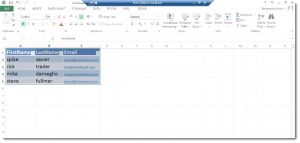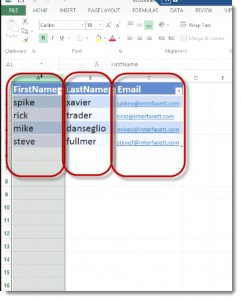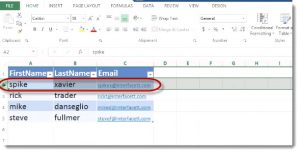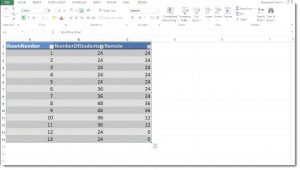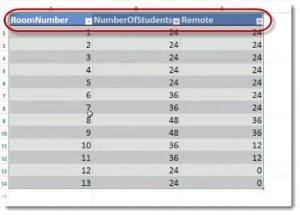Managing Lists and Libraries in SharePoint – An Overview
Managing Lists and Libraries in SharePoint – An Overview
For more SharePoint training videos in this series, see:
Part 1 – Using Navigation Controls in a Collaboration Site in SharePoint
Part 2 – Using Navigation Controls in a Publishing Site in SharePoint
Part 3 – Configuring SharePoint Navigation in a Publishing Site – Activating the Publishing Feature
Part 4 – How to Configure Navigation in SharePoint Publishing Sites
Part 5 – » Managing Lists and Libraries in SharePoint – An Overview «
Part 6 – Creating Lists and Libraries in SharePoint
Video Transcription
To be a successful SharePoint Site Owner or Site Collection Administrator, it’s very important that you have a firm understanding of managing Lists and Libraries. That’s one of the objectives on the Microsoft SharePoint Certification exam 77‑419. We’re going to cover this here.
For Instructor-Led SharePoint Training, see our SharePoint Course Schedule
SharePoint Lists and Libraries are very similar to the concept of worksheets in an Excel Workbook. You might have a place where you’re keeping tasks or issues or contacts, announcements, things like that.
Now, if you look at and Excel Notebook or an actual Workbook, if I was going to use an analogy, the Workbook might be a SharePoint Site, a place that has multiple worksheets. I would use the analogy of a Worksheet as a SharePoint List or a SharePoint library.
It’s very similar, at least, at the beginning, but SharePoint Lists and Libraries are incredibly functional. There’s amazing things you can do with them, and they naturally exist in your SharePoint Sites.
Let’s take a look at this Worksheet. I have a worksheet of Instructors where I’m keeping track of the Instructor’s ‑‑ First Name, Last Name, and email address.
I can see that I have these columns, and I’m going to put the instructor’s first name in the first name column.
Their last name in the last name column, and their email in the email column. Each instructor is their own row.
In SharePoint, we have very similar things as compared to an Excel Worksheet.
List and Library Columns – a column might be first name, last name or email…
List and Library Items – which are row one, row two, row three… (It actually wouldn’t be row one, row one’s the header). You can see that each instructor gets their own row.
Here in the same Workbook, (think of this as the same Site in SharePoint), I have a totally separate worksheet.
Think of it as a List or Library, to manage classrooms. It makes sense because we’re Interface Technical Training. We might have these different containers for different objects. Therefore, we will put classrooms in our classrooms worksheet, instructors in our instructor worksheet, but we’re keeping track of all that data.
For Instructor-Led SharePoint Training, see our SharePoint Course Schedule
I’ve got room number, number of students, how many remote students can be in each classroom. This is useful information that I can put into Excel.
If I think of this Excel Workbook, if I was going to have multiple worksheets to manage different aspects of a training environment. In SharePoint I could create a Site Collection, choose the proper Top Level Site Template that has the right features activated including the right starting point for Lists and Libraries. Then, I could maintain this information inside of SharePoint.
Now, SharePoint Lists and Libraries, just like the Site, have a bunch of templates out-of-the-box for us.
SharePoint Templates
- Tasks Template
- Contracts List Template
- Document Template
- Pages Library
- Links
They understand that you’re going to be keeping track of tasks, so you’ll put those into a task list. There’s a Task List Template, which is just really morphed around holding tasks. It’s a perfectly shaped bucket to hold tasks.
If you want to keep some contacts in SharePoint, they have a Contacts List, which is a perfectly formed bucket to hold contacts. If you want to have pages, they have a Pages Library, which is perfectly formed to hold pages. The same goes with Documents.
Here’s the cool part. Later on, when we explore Content Types, and we’ll see that we can take their starting point and extend them with our metadata in the form of Site Columns. Then, we can take those buckets and work with them to be perfect containers for our content.
If we manage purchase orders, we can start with a Document Library, add some metadata, like Purchase Order Number, Vendor ID, Purchase Order Delivery Date and then add this metadata to the out‑of‑the‑box document library.
Next we’ll cover creating List and Libraries in SharePoint.
For Instructor-Led SharePoint Training, see our SharePoint Course Schedule
Spike Xavier
SharePoint Instructor – Interface Technical Training
Phoenix, AZ
You May Also Like
A Simple Introduction to Cisco CML2
0 3901 0Mark Jacob, Cisco Instructor, presents an introduction to Cisco Modeling Labs 2.0 or CML2.0, an upgrade to Cisco’s VIRL Personal Edition. Mark demonstrates Terminal Emulator access to console, as well as console access from within the CML2.0 product. Hello, I’m Mark Jacob, a Cisco Instructor and Network Instructor at Interface Technical Training. I’ve been using … Continue reading A Simple Introduction to Cisco CML2
Cable Testers and How to Use them in Network Environments
0 732 1This content is from our CompTIA Network + Video Certification Training Course. Start training today! In this video, CompTIA Network + instructor Rick Trader demonstrates how to use cable testers in network environments. Let’s look at some tools that we can use to test our different cables in our environment. Cable Testers Properly Wired Connectivity … Continue reading Cable Testers and How to Use them in Network Environments
Data Models in Business Analysis
0 200 0This video is from our PMI-PBA Business Analysis for IT Analysts and Project Managers (PMI-PBA)® Certification now available at Interface Technical Training. Also see Steve’s PMP Project Management Certification Course: Project Management Professional (PMP®) Certification Video Training PMBOK® 6th Edition Video Transcription: Data Models are part of the elicitation analysis in PMI-PBA. This is the way … Continue reading Data Models in Business Analysis

